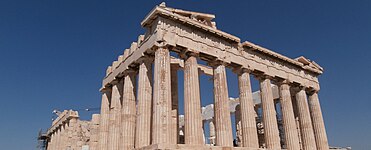I definitely don't see how it is "destroying" anything to write, as Kees did, that "I am not convinced that the golden ratio is any better or worse then for example a 2:3 or 3:4 or 3:5 ratio." As I wrote before, it is a subject of some debate and controversy, and there's no harm in debating it. Further, I think a number of Kees' specific observations are correct. I spent a lot of time working through Euclid's Elements a number of years ago. My memory is a bit fuzzy but I don't remember that he prioritized the golden rectangle over whole number ratios; rather I remember that the latter are pervasive throughout the book. Euclid was influenced by Pythagoras, and a major basis of Pythagoras' cult was was whole number ratios as instantiated in music (2:1 = octave, 3:2 = perfect 5th, etc.). It's also true that much of the evidence for the use of the golden section and the Fibonacci series in antiquity is circumstantial rather than direct.
It might be worth stepping back for a little perspective and asking what people want to design, and how such things have been designed in the past. I assume the majority of people here want to design furniture, and maybe some joinery stuff like doors and windows. A minority of us are toolmakers, instrument makers, boatbuilders, etc. And most people here, as opposed to the power tool forums, are interested in making and designing stuff the way it was done before the 20th c.
Now, there is some evidence that architects before the 20th c. used the golden section or the Fibonacci series in their designs, though again a lot of that evidence is indirect. But I have never seen any evidence that the great and famous furniture makers of the 18th and 19th c, not to mention all the anonymous makers who produced excellent work, used these ratios in any systematic way. On the other hand, I have seen evidence, including in Walker/Tolpin's book, that they used whole number ratios.
A few posts ago, a guy wrote that "the key to eliminating those sorts of surprises is drafting an entire project before you ever touch a piece of wood." If that works for him, fine, but the evidence is that most furniture makers in the hand tool era never did this. They didn't make drawings at all, or if they did, they were the equivalent of napkin sketches. They didn't make detailed measurements, either. What they did was use dividers and a few basic measurements, the latter often with story sticks rather than numerical dimensions. And this again tends to lead to simple whole-number ratios.
I don't think it's bad though, to argue about what ratios to use. Probably for most people who lack design experience, using any ratios, and thinking in any systematic way about how the parts complement the whole, would be a step in the right direction.
Last edited by Steve Voigt; 08-06-2016 at 11:30 AM.
"For me, chairs and chairmaking are a means to an end. My real goal is to spend my days in a quiet, dustless shop doing hand work on an object that is beautiful, useful and fun to make." --Peter Galbert













